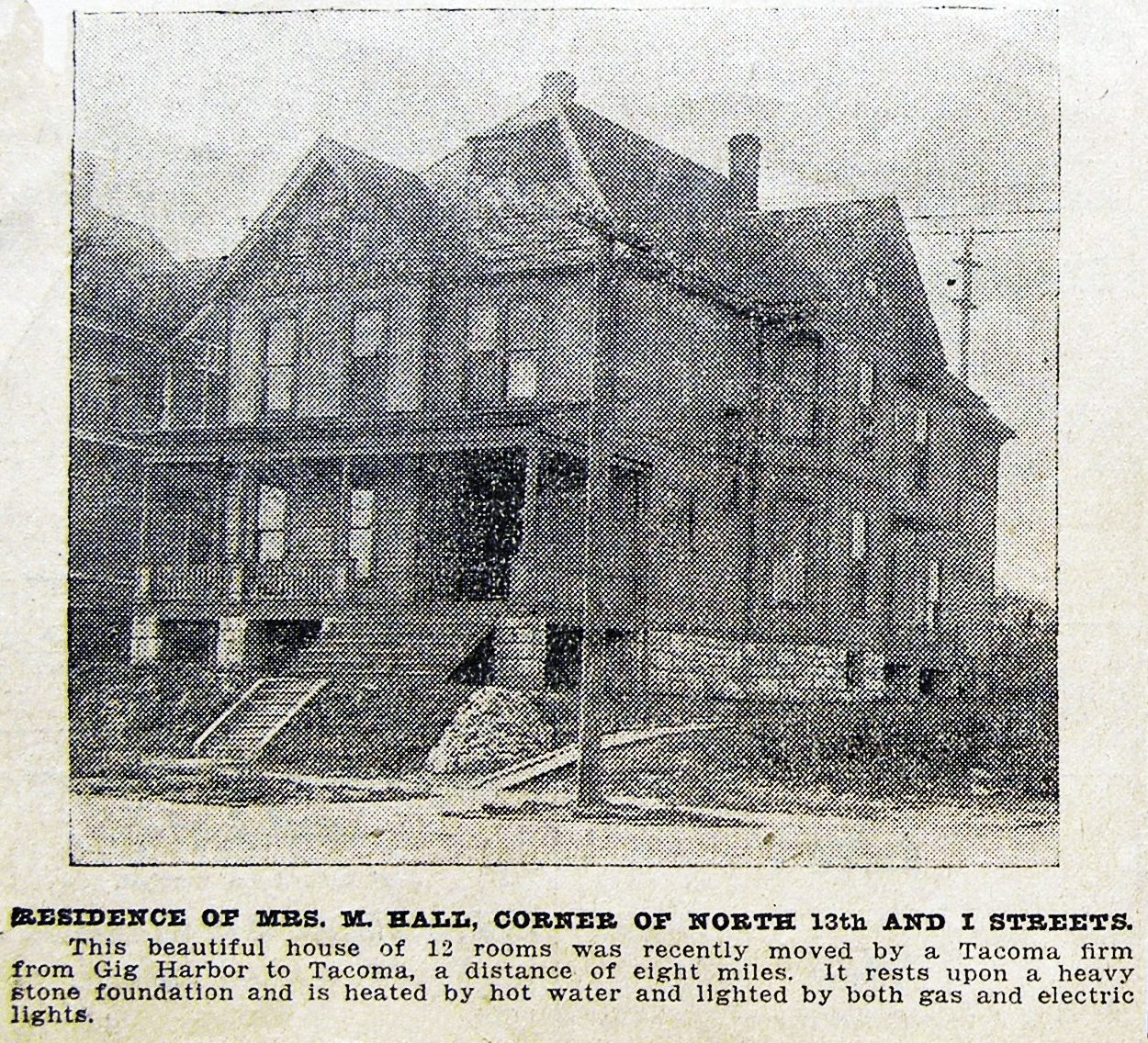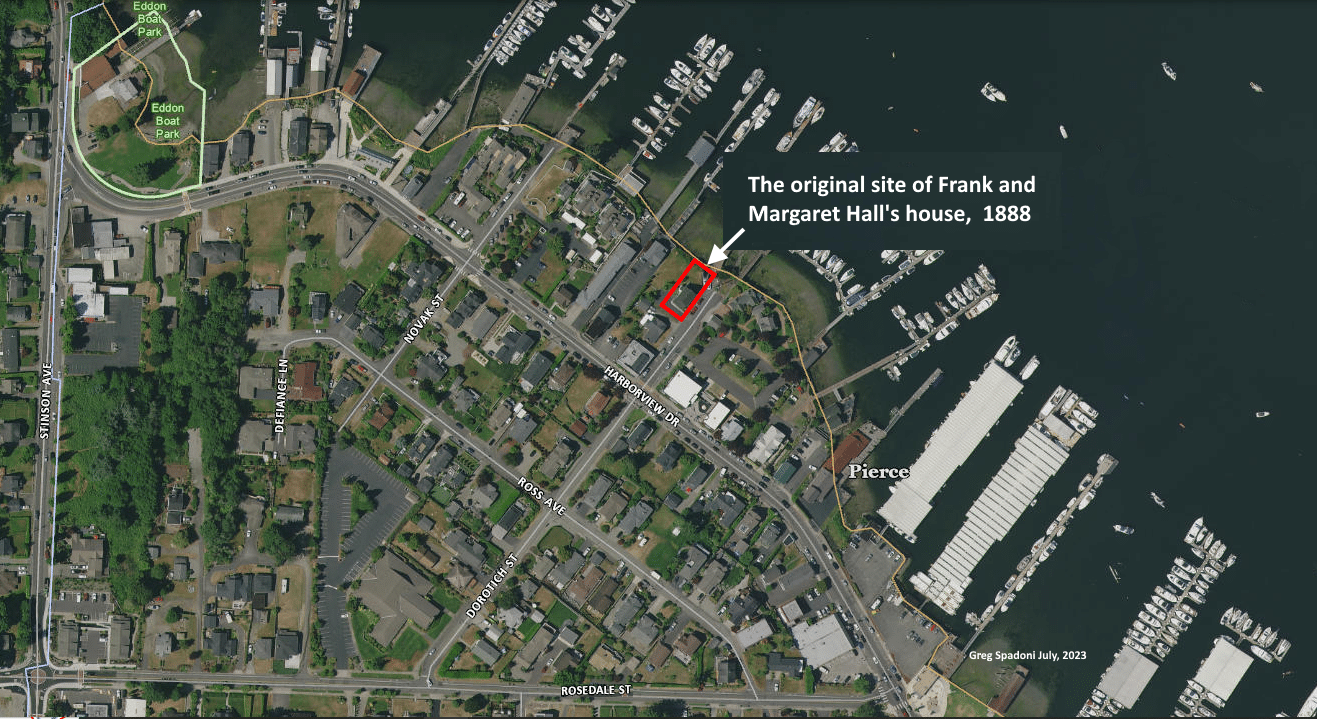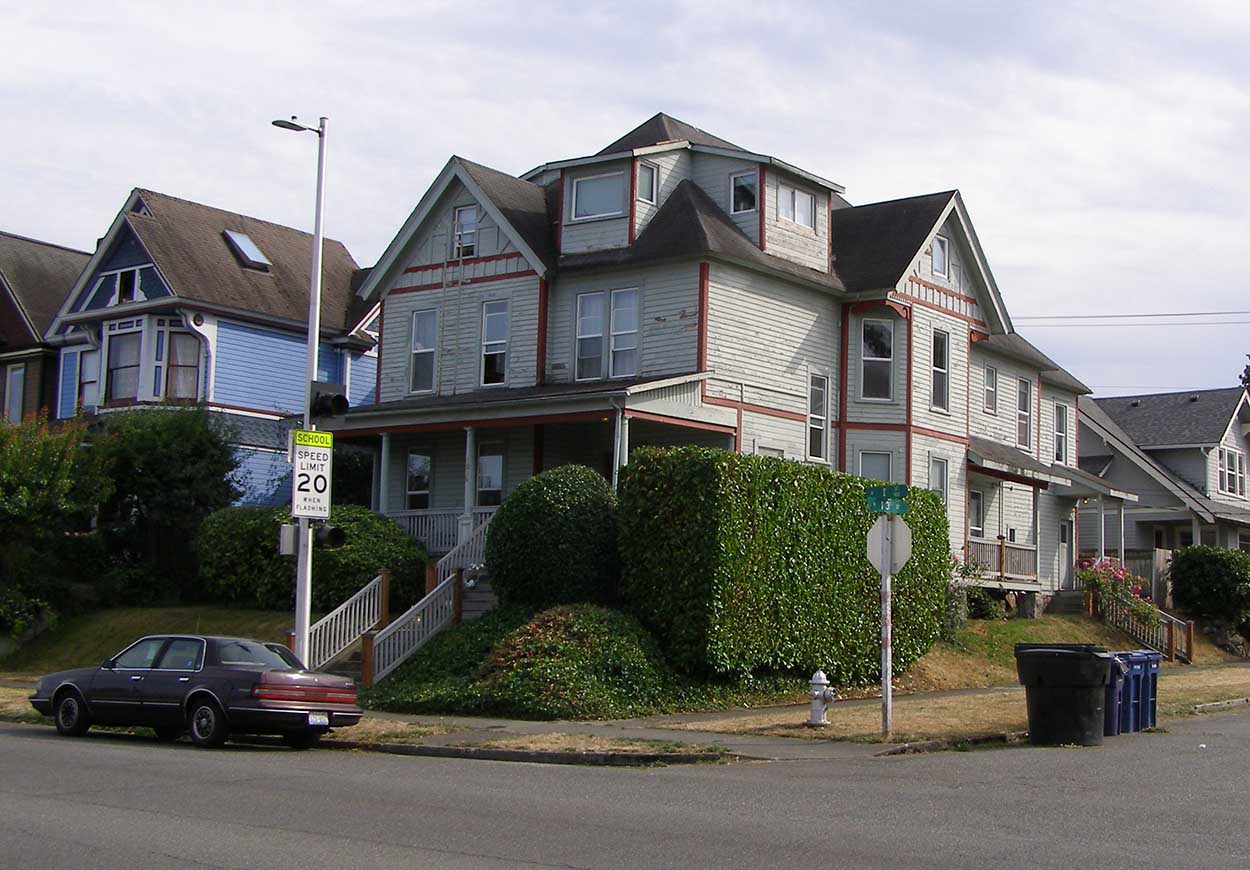Community
Gig Harbor Now and Then: Gig Harbor Lumber Company wood built this home, but it’s not in Gig Harbor
Our last question concerned the lumber sawed at the mill of the Gig Harbor Lumber Company, which operated from 1888 to 1891. There is only one remaining building known to have been constructed with Gig Harbor Lumber Company lumber, a house built in Gig Harbor in 1888.
Community Sponsor
Community stories are made possible in part by Peninsula Light Co, a proud sponsor of Gig Harbor Now.
Where is the Gig Harbor house built from Gig Harbor Lumber Company Lumber in 1888 located?
Answer: Tacoma.
The only known remaining building constructed with Gig Harbor Lumber Company lumber, a house built in Gig Harbor in 1888, is located on the southeast corner of the intersection of North 13th and I streets in Tacoma. Yes, a house built in Gig Harbor in 1888 is now in Tacoma, and has been since 1904.

After her husband’s death, Margaret Hall had her enormous house in Gig Harbor moved to Tacoma.
The house was built in the Millville neighborhood of today’s Gig Harbor by the mill company’s president, Frank Hall, and his wife, Margaret. When Frank died in 1903, Mrs. Hall wanted to live next to her daughter in Tacoma. But she loved her Gig Harbor home, and didn’t want to leave it. She had the money to have it moved across the Narrows, so why not? During the loading of the house onto two barges, it was almost dumped in the bay, but the move was ultimately successful.

Frank and Margaret Hall’s house, at the time the biggest and most lavish home in Gig Harbor, was built on the waterfront half of Millville Lot 1, Block 2. Pierce County Assessor-Treasurer aerial base map.
This simple question has a degree of difficulty of only 2 (out of 5) because I posted the story of the Hall house online two years ago. It should’ve been fairly easy to find.

Mrs. Hall’s big Gig Harbor house now serves as a small apartment building in Tacoma. Photo by Greg Spadoni
Savage House
On the Gig Harbor Now Facebook page, Billy Sehmel suggested the answer was the Savage home. He was incredibly close! According to Tomi Kent-Smith’s Harbor History Museum Blog entry for Aug. 14, 2014, her home, which is directly across Harborview Drive from the Halls’ Lot 1, Block 2, in Millville, was owned by George Savage from 1890 to 1897. Although the Pierce County Assessor’s website says her house was built in 1890, any year listed for the construction of a house before the 1960s is highly unreliable. It could be several years older or several years newer. We simply don’t know. That’s why the question concerned the oldest known building made of Gig Harbor Lumber Company lumber. There could well be others, but they are not known.
Incidentally, when the Halls bought the Millville lot where they built their big home in 1888, the seller was none other than George Savage. He bought it from John Novak for $300 and sold it to the Halls two months later for $400. Not bad at all.
Billy Sehmel obviously has a good understanding of Gig Harbor history. He couldn’t have simply pulled the idea of the Savage house out of his hat. He had to have some knowledge behind it.
Next question: Burley and a B-17
We leave Gig Harbor and Pierce County, and move to nearby Burley, in Kitsap County, for our next question of local history.
Eighty years ago, the United States was totally involved in the second global war of the 20th century. World War II was, of course, one of the major events in the history of the world. Its greater impacts are still being felt today, but most of the lesser effects are long forgotten. This little story is one of the forgotten ones.
In the build up to, and during the war, The Boeing Airplane Company of Seattle was producing the United States’ most famous heavy bomber of that conflict, and probably of all time: The four-engined B-17 Flying Fortress.
Production in Seattle peaked at 16 airplanes per day. Every single one of them had to be test flown before delivery to the U.S. Army, and most of those flight tests were made over Puget Sound and the Olympic Peninsula. Weather permitting, seven days a week, for several years running, it was commonplace to see or hear multiple B-17s flying over the Gig Harbor and Key Peninsulas.
The airplane’s four Pratt & Whitney radial engines produced a rumbling, thundering sound so distinctive that if you ever heard a B-17, you never forgot it.
The mystery of the missing stabilizer
In March 1943, a brand-new Boeing B-17F Flying Fortress, fresh out of the factory in Seattle, crashed in Burley, west of Purdy. A manufacturing defect caused one of the horizontal stabilizers (rear wings) to be torn from the fuselage, severing critical control cables in the process.
No longer able to fly the airplane, the crew was forced to bail out. Everyone survived without injury.
To determine the cause of the crash, and in turn correct the problem, Boeing needed to find and inspect the missing rear stabilizer. Having detached from the airframe at an altitude over 10,000 feet, the stabilizer did not land anywhere near the crash site.
The task of searching dozens, if not hundreds, of square miles of heavily forested land was nothing less than daunting. The stabilizer could’ve made it to the ground, could’ve been hung up in a tree, or it could’ve dropped into any one of dozens of lakes and ponds and sank to the bottom. Whatever it took to find it, the piece had to be found, for the same defect that caused the airplane to crash had been incorporated into many other B-17s that were being used for training flights at home and bombing missions abroad in the various theaters of the war.

A brand-new B-17F nearly identical to this one crashed in Burley in 1943.
To expedite the finding of the missing part, Boeing appealed to the public, offering a cash reward for its return to the company. As could be expected, the kids in the greater Burley area were very enthusiastic to find the missing piece of the B-17 and collect the reward (the cash amount is unknown). How long did the local kids search for the bomber’s horizontal stabilizer?
This question’s degree of difficulty: 4 (out of 5).
Does the answer to today’s question just pop into your head? No, probably not. With a rating of 4, it’s a very difficult one. Is it possible to find the answer? Well, you won’t find it at the Harbor History Museum or in the files of the Key Peninsula Historical Society. You won’t find it online either, at least not in the next two weeks, before it’s published here.
In the meantime, you’re invited to visit the Gig Harbor Now Facebook page and post your guess and other thoughts about today’s question, and read what others have to say about it. Comments on the answer given today are also welcomed.
If today’s B-17 crash question proves to be too difficult, maybe we’ll have to dial down the Wheel of Difficulty for next week.
Greg Spadoni of Olalla has had more access to local history than most life-long residents. During 25 years in road construction working for the Spadoni Brothers, his first cousins, twice removed, he traveled to every corner of the Gig Harbor and Key Peninsulas, taking note of many abandoned buildings, overgrown farms, and roads that no longer had a destination. Through his current association with the Harbor History Museum in Gig Harbor as the unofficial Chief (and only) Assistant to Linda McCowen, the Museum’s primary photo archive volunteer, he regularly studies the area’s largest collection of visual history. Combined with the print history available at the Museum and online, he has uncovered countless stories of long-forgotten local people and events.


